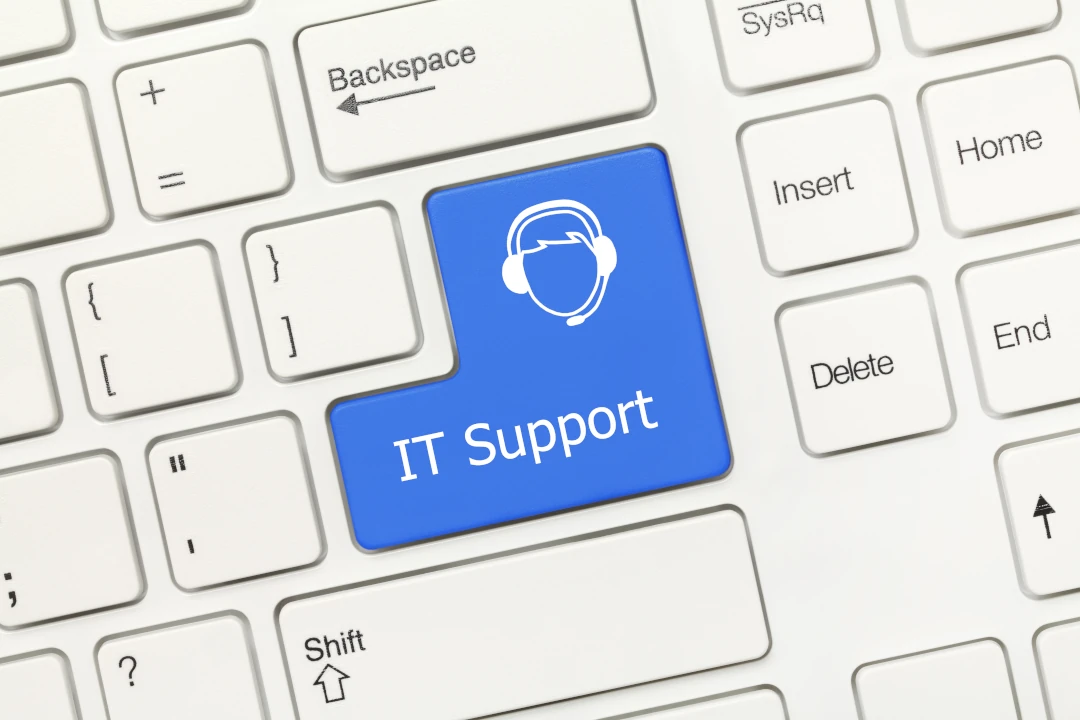
Remote IT Support: A Beginner’s Guide To Getting Started
As companies adopt cloud-based platforms, integrate advanced software, and operate with a growing remote workforce, there's an increased demand for consistent, responsive IT support. For businesses that aim to stay at the forefront of technological advancements, having a robust remote IT support structure is indispensable.
Remote IT support not only guarantees timely responses to IT challenges but also offers unparalleled flexibility, scalability, and cost savings. Furthermore, users, clients, and employees enjoy a superior experience interacting with digital platforms that operate without hitches.
It's here that BoomTech IT Support and similar companies have carved a niche for themselves, offering services that prioritize customer satisfaction and operational excellence. With this importance in mind, understanding the basics of remote IT support is essential for those embarking on this journey.
Defining Remote IT Support

Remote IT support refers to the tech assistance provided to users or companies without the technician being physically present at the user's location.
This support is delivered over the internet, phone calls, chat applications, or remote desktop software. The core idea is to troubleshoot, diagnose, and rectify issues without needing direct, hands-on access to the hardware in question.
The benefits of this method are evident. First, it allows for immediate response to issues. Instead of waiting for a technician to arrive on-site, companies can have their problems addressed almost instantly. Second, it's a cost-effective method. By reducing the need for physical visits, companies save on transportation costs, making remote support a more economical choice.
With its origins rooted in helping distant clients, remote IT support has now become a staple for companies of all sizes. Whether it's a minor software glitch or a major system malfunction, remote support teams can provide timely and effective solutions.

Common IT Support Services
Remote IT support emerges as the nexus between technical expertise and the pressing needs of users across the globe. Here are some common services that remote IT teams can provide.
- Diagnostic and troubleshooting
- Software installation and updates
- Hardware monitoring and optimization
- Network support
- Virus and malware removal
- Backup and recovery services
- Security assessment and recommendations
- Patch management
- 24/7 support and monitoring
- Consultation and IT road mapping
These services have reshaped the way businesses and individual users interact with their IT environments. Their adaptability, efficiency, and comprehensive range signify not just the evolution of tech support but also its future.
Elevate Customer Identity Solutions with Remote IT Support
In the landscape of customer identity solutions (CIAM), remote IT support takes center stage as the bridge connecting technical proficiency with the pressing needs of users around the world. These remote IT teams excel in delivering a comprehensive range of services tailored to the specific requirements of CIAM solutions. Among the common services they provide are seamless integration of CIAM systems into existing infrastructure, proactive monitoring and maintenance to ensure data security, rapid troubleshooting to address user issues, and continuous updates to keep CIAM systems at the cutting edge of functionality. As the demand for robust customer identity solutions continues to grow, remote IT support plays a pivotal role in ensuring the smooth operation and optimal performance of these critical systems.
Getting Started With Remote IT Support

Getting started with remote IT support involves a series of structured steps to ensure you're equipped to offer quality service and handle a variety of IT challenges. The steps below can help you get started.
1. Assess The Needs And Goals
Before delving into remote IT support, it's essential to have clarity on what's required. For businesses, this means understanding the nature of common IT challenges, the frequency with which they occur, and the extent of their impact. This self-assessment guides the resources and tools needed.
2. Invest In the Right Tools
The effectiveness of remote IT support largely hinges on the quality of the tools in use. Reliable remote desktop software is foundational, allowing technicians to connect to client systems seamlessly.
Additionally, a well-organized ticketing system ensures efficient tracking and resolution of issues. Communication, too, is crucial, and selecting robust tools for dialogue ensures clarity and timely responses.
3. Establish Clear Protocols And Procedures
By setting clear protocols and procedures for common challenges, remote IT professionals ensure that clients receive uniform, high-quality service regardless of the technician they interact with. Furthermore, establishing security protocols safeguards both the client and the technician during remote access sessions, ensuring a trust-filled environment.
4. Train And Upskill
The IT landscape is dynamic, with new challenges and solutions emerging regularly. Remote IT support personnel must engage in continuous learning to stay updated. This could involve participating in certification courses, attending relevant workshops, or simply staying abreast of the latest trends and technologies.
5. Offer Multi-tiered Support
By offering multi-tiered support, IT professionals can efficiently address issues based on their complexity. This approach ensures that simpler problems are resolved swiftly while more intricate challenges receive the detailed attention they warrant. It streamlines the support process, ensuring optimal resource allocation and timely issue resolution.
6. Prioritize Security
Remote IT support sessions inherently involve accessing another's system, which can be vulnerable to attacks if not properly secured. Therefore, all interactions, data transfers, and communications must be encrypted and conducted using trusted platforms. Staying informed about potential security threats and adopting best practices to counter them is paramount.
7. Provide Clear Communication Channels
Clear communication is the backbone of effective remote IT support. Clients need to easily articulate their challenges and receive understandable solutions. Offering varied communication channels – be it chat, email, phone, or video calls – ensures that clients can choose the medium they're most comfortable with, facilitating a smoother support experience.
8. Feedback And Continuous Improvement
Every interaction provides an opportunity for growth. Encouraging clients to share feedback post-support can reveal areas that need refinement. Analyzing this feedback and making the necessary adjustments not only enhances service quality but also showcases a commitment to excellence, which can foster client trust and loyalty.
With these steps in mind, venturing into remote IT support can be both rewarding and impactful, especially in an era where digital solutions are pivotal.
Conclusion
As technology continues its relentless advance, the need for quick, efficient, and adaptive IT solutions becomes even more paramount. This guide sheds light on the essence of remote IT support, its intrinsic services, and the essential steps for those keen on embracing or offering these services.
Through awareness, preparedness, and continuous enhancement, companies and IT professionals can harness the full potential of remote support, ensuring seamless digital experiences for all.
Loading comments...

